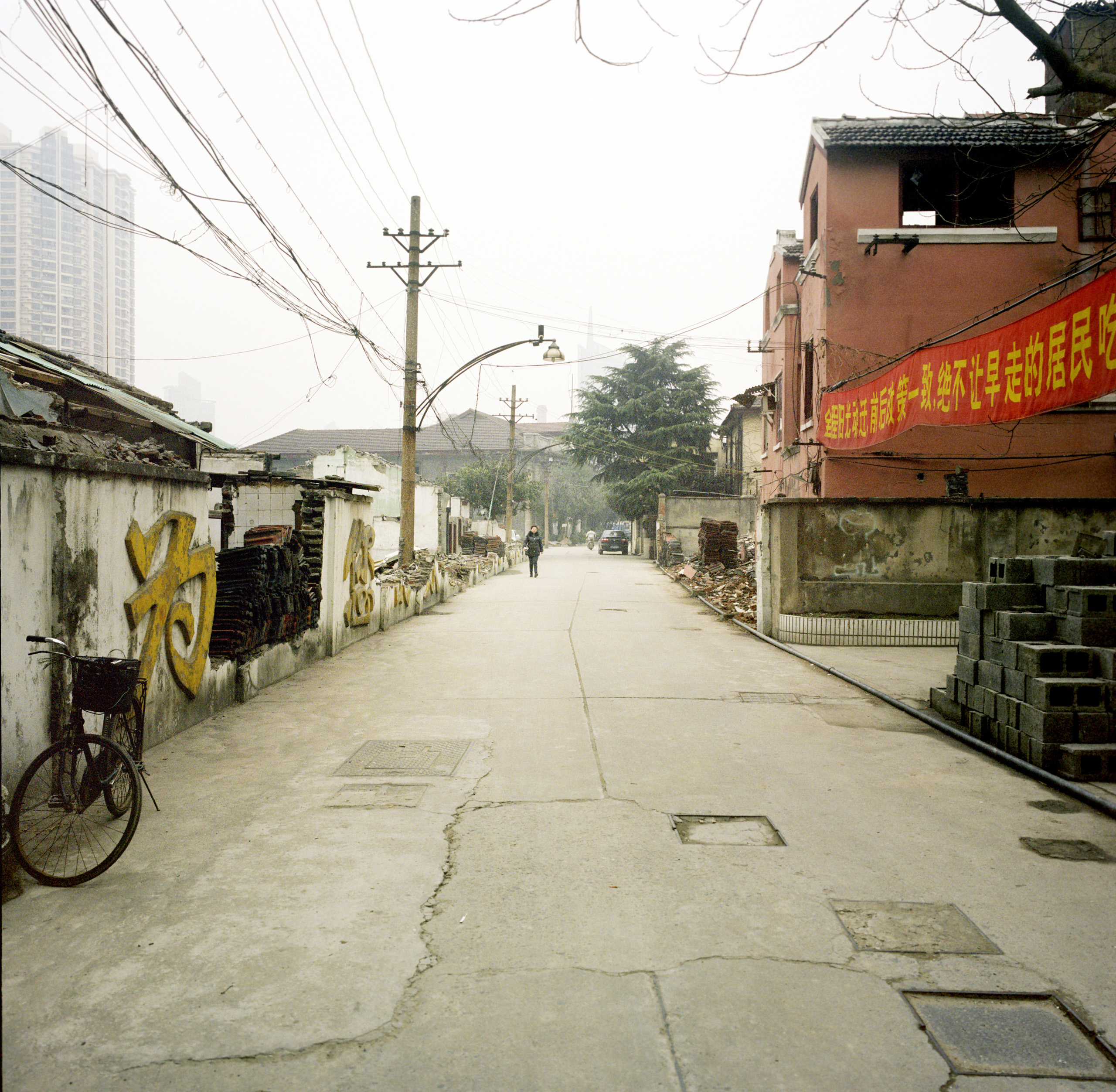The Friction of Everyday Life
Survey 4 – Time is the Key

From 2008 to 2010, I spent a lot of time in Shanghai for my research and photography project. For the past few decades, Shanghai has been one of the central locations in China experiencing an endless cycle of development. In the photographs, it was difficult not to capture the juxtaposition of various elements which represent the different times the city has seen.
During my research, I met Ms. Lu at her mom’s home in Putuo District. Looking out from the windows of her apartment, I saw massive rows of residential buildings. The buildings appeared outdated and stalled in time, but the district was converted from rural fields to residential buildings only in the early 2000s.

Putuo District located in the western part of Shanghai. Before the late 1970s, it was a traditional rural district. In June 2009, it was one of the largest urban residential districts. Shanghai, China, June 2009
Behind the highrise towers in the center of Shanghai, there are clusters of low-lying houses. These houses were constructed in the late 1800s. For decades, these neighborhoods represented the overcrowded and outdated living conditions in Shanghai. A majority of these small homes still lack the basic modern infrastructure found in the homes of many Shanghainese. Yet, these buildings remain a symbol of the unique and rich culture of Shanghai and represent the future of the chic lifestyle.

Jing’an District in Shanghai. The mix of old neighborhoods that are composed of low rise buildings and skyscrapers. Shanghai, China, June 2009
My project was a survey of time. I visited the same spots multiple times. The photographs documented change as well as a lack of change.
On my first trip to Shanghai in 2008, a friend urged me to visit Mo Ganshan Road which was supposedly undergoing an intensive renewal process. In 2010, I went back to the same spot again and found that only one wall had been removed. In June 2009, as part of the preparations for the upcoming Shanghai Expo 2010, the buildings around the expo site in Pudong district were all covered by scaffolding. Five months later in November 2009, the scaffolding was taken down, revealing that the year-long renovation had been to paint the buildings to make them look new.


Mogan Shan Road, Shanghai, May 2008 and January 2010


An intersection at Jiaonan Residential Compound, Shanghai, China, June 2009 and November 2009
It occured to me that time is the key when reading these photographs, but the sense of time also depends on the context. What I saw in Shanghai reminded me of the story of my grandparents’ house in Kunming, my hometown. I was born in China in 1976. During my childhood, time flowed very slowly. We did not expect significant changes. My grandparents had a little house in the center of the city. The house was situated in an alley tucked behind a series of buildings. I loved going there to play in the house’s small courtyard. My grandparents often complained about the century old house – the leaky roof, the crumbling adobe bricks, no indoor plumbing, the shared public restroom outside, etc. However, no one expected any changes. From time to time, my grandpa would paint the walls and refinish the floor. Every Chinese New Year the family had dinner in this house at a large make-shift table.
By the end of the 1980s, a few new buildings started being erected around the neighborhood. My grandpa started talking about how he was hoping to move, not only out of this house, but also out of the center to another part of the city which was considered modern.
Finally, in 1995 the property was expropriated by the government. My grandparents were compensated with a modern apartment in a residential compound far from the city center. My grandpa was delighted. Six years later, he passed away. Soon after that my grandma moved out of the apartment to live with my aunt.

Putuo District located in the western part of Shanghai. Before the late 1970s, it was a traditional rural district. In June 2009, it was one of the largest urban residential districts. Shanghai, China, June 2009
In less than a decade, the definition of “new” had been updated numerous times. The sense of time has been completely altered. The “new” apartment and the entire residential district had become obsolete.
